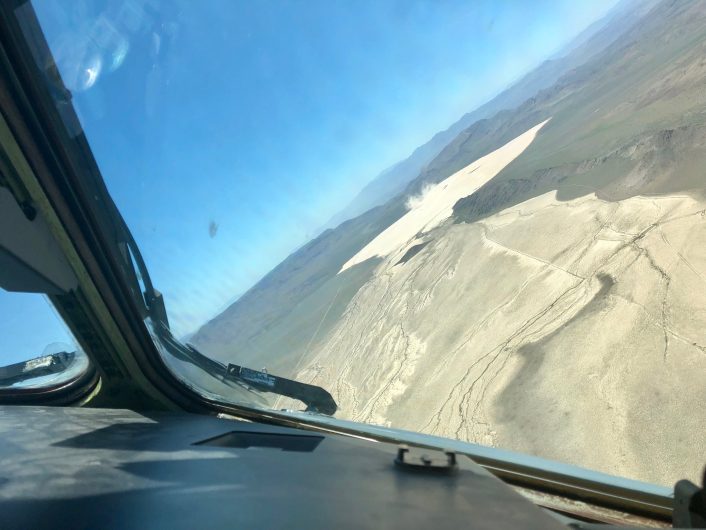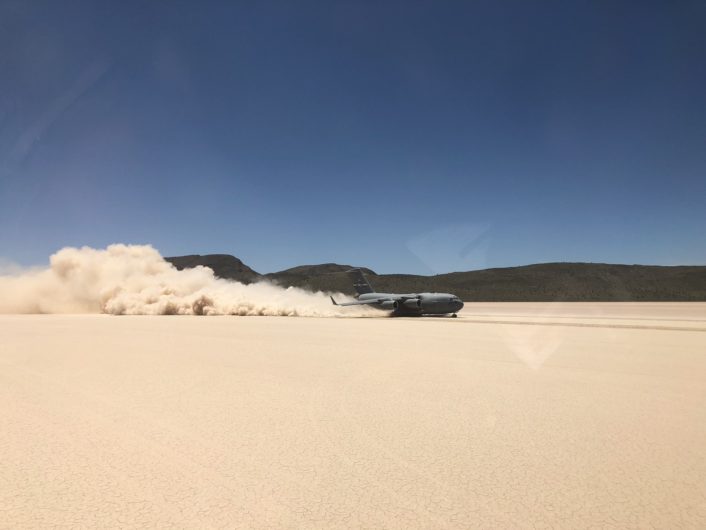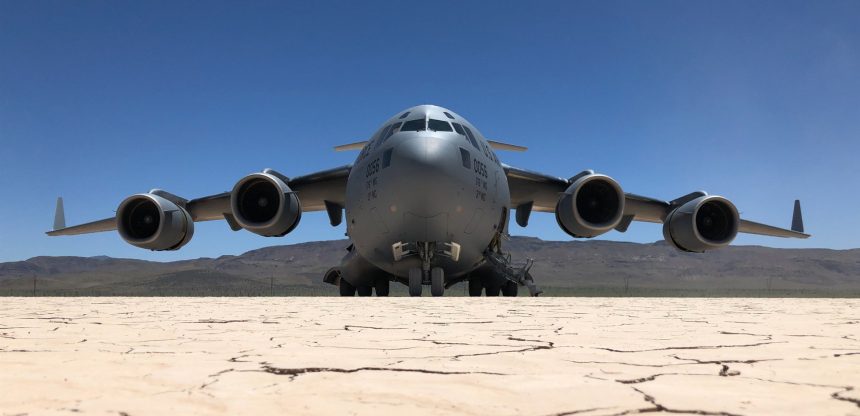The C-17 Globemaster III cargo aircraft were taking part in JFEX (Joint Forcible Entry Exercise).
The images in this post were released by 3rd Wing Commander on Twitter. They show, from different angles (including from inside the cockpit), a C-17 airlifter, belonging to the 517th Airlift Squadron from Joint Base Elmendorf-Richardson, Alaska, performing training on a dry lake during Joint Forcible Entry Exercise (JFE). The improvised runway is Delamar Dry Lake Bed, on the NTTR (Nevada Test and Training Range), that along with Keno airfield, is often used to practice airlifters landings behind the enemy lines.
JFEX takes place twice a year as one of the final assignments for those participating in the U.S. Air Force Weapons School (USAFWS). The Weapons School represents the highest level of training offered by the USAF. Those selected to participate are typically instructors on their platforms (aircraft/systems), and have demonstrated leadership excellence. WS graduates are among the finest leaders and advanced integration warfighters on the planet.

The scenario of JFEX usually include a Blue (friendly) force facing a Red (enemy) force that has fielded aircraft as well as advanced radar and surface to air missile sites that create an Anti-Access/Area-Denial zone (A2/AD). Within that contested zone, a critical airfield is the target that must be secured.

JFE is a unique Large Force Employment exercise (LFE) that sees the participation of all types of aircraft, including fighters, electronic attack and electronic warfare platforms, cargo haulers as well as ground forces, paratroopers and equipment that are air dropped into the simulated enemy territory.
Here’s what this Author wrote about Delamar Dry Lake Bed in a previous article:
C-17 Globemaster III airlifters from 57th Weapons Squadron, A-10 Thunderbolt IIs from the 66th Weapons Squadron, HC-130J from the 34th Weapons Squadron as well as HH-60Gs belonging to the 66th Rescue Squadron took part in USAF Weapons School squadrons composite mission application and combat search and rescue operations at the Delamar dry lake bed on the NTTR (Nevada Test and Training Range).
Referred to as “Texas Lake” dry lake bed because of its resemblance to the state of Texas from the air, Delamar Lake landing strip was established in 1943 and, in the 1960s it was designated emergency landing site for the North American X-15, a rocket-powered, missile-shaped manned aircraft operated by the U.S. Air Force and NASA capable to reach the edge of space at an altitude between 100,000 and 300,000 feet at speed exceeding 4,500 MPH (+7,270 km/h).
In fact, the dry lake bed was located underneath the Delamar Dry Lake Drop Zone where the X-15s brought to the launch altitude of 45,000 feet under the wing of a B-52 bomber, were dropped at a speed of Mach 0.8.
The Delamar Lake Landing Strip consists of a 15,000 ft long runway; still, considered the lack of obstacles, aircraft can land in any direction.
Along with making “unprepared landing strip operations” training possible, dry lakes can be particularly useful also in case of emergency: the huge lakebed can minimize the damage to a plane forced to land there. Here is what happened when a B-1 Lancer performed a crash landing on the Rogers Dry Lake at Edwards Air Force Base in 1989. Here you can find a U.S. Air Force C-5 Galaxy airlifter making a successful emergency landing once again at Rogers Dry Lake in 2001.










